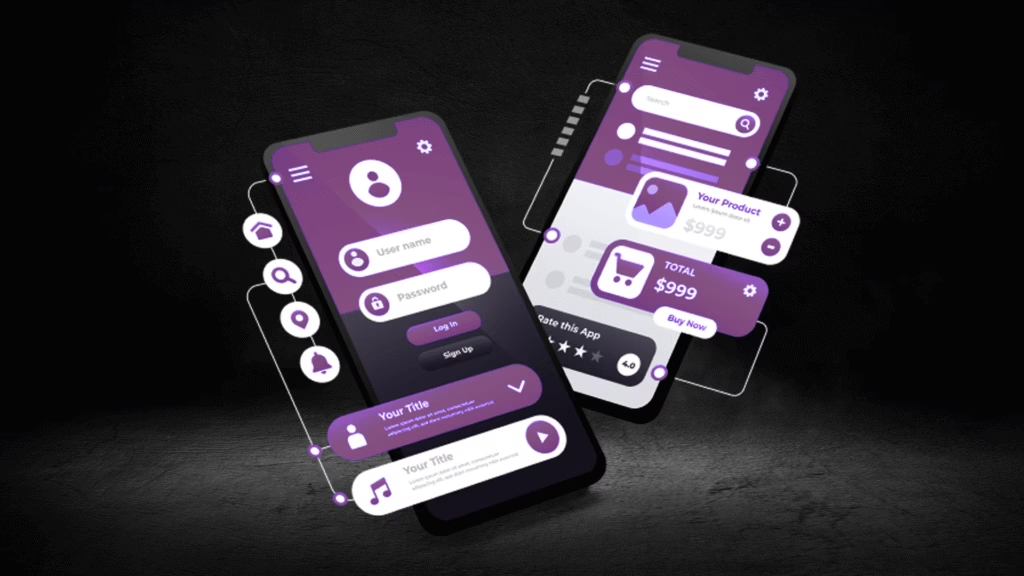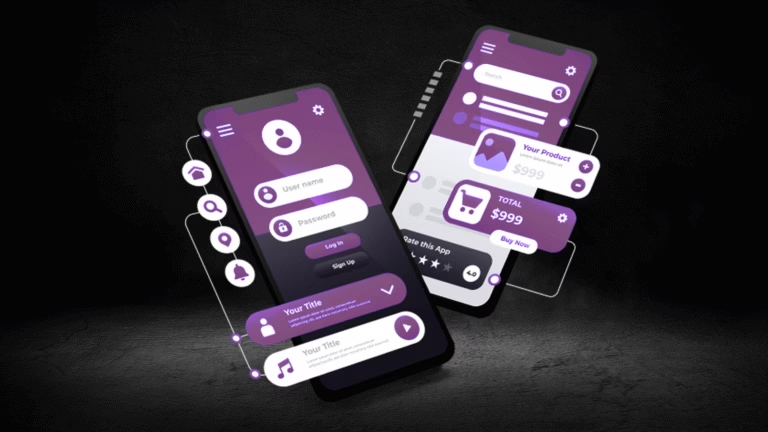On the other hand, a web-based app, also known as a web application or WBA, is accessed via a web browser over a network, such as the internet. Unlike mobile apps, web-based apps do not need to be installed on the device. They are designed to run on any device with a web browser, providing a more platform-independent solution. This characteristic makes WBAs highly accessible and easy to update, as changes on the server side are immediately reflected for all users.
Understanding the fundamental differences between mobile apps and web-based apps is essential for businesses and developers. Mobile apps generally offer a more personalized user experience, can leverage device-specific features like GPS and camera, and often provide faster performance. However, they require development for each platform, such as iOS and Android, which can drive up the costs and complexity.
Web-based apps, while platform-independent and easier to maintain, might not deliver the same level of performance and user experience as native mobile apps. They also rely on a constant internet connection, which can be a limitation in areas with poor connectivity. Yet, their cross-platform nature and ease of access make them a popular choice for many applications, especially those that need to reach a broad audience with minimal development effort.
The rise of both mobile and web-based apps in the digital landscape has been significant, influencing various industries such as retail, healthcare, finance, and more. For businesses, choosing the right type of app is a strategic decision that can impact user engagement, development costs, and overall success. Developers must weigh these factors carefully to determine the most suitable approach for their projects.
Design Considerations
Design is a critical component in the development of both mobile apps and web-based apps, each with its own set of unique principles and challenges. Understanding these design considerations is pivotal in creating an engaging and effective user experience (UX).
For mobile apps, adhering to native design guidelines specific to platforms such as iOS and Android is essential. These guidelines ensure that the interface aligns with user expectations and leverages the distinctive features of each operating system. Touch-screen optimization is another crucial aspect, requiring thoughtful placement of interactive elements to facilitate easy navigation and usability. Additionally, the ability of mobile apps to function offline by caching essential data is a significant advantage, enhancing user accessibility and convenience.
On the other hand, web-based apps (WBA) present a different set of design challenges. A primary consideration is responsive design, which ensures that the app adapts seamlessly to various screen sizes and resolutions, offering a consistent experience across devices. Cross-browser compatibility is also vital; the app must perform uniformly well on different browsers, from Chrome to Safari. Performance optimization is another key factor, as users expect web-based apps to load quickly and operate smoothly, regardless of their internet connection speed.
Designing intuitive and engaging interfaces for both mobile and web-based apps requires a deep understanding of user behavior and preferences. Best practices include conducting thorough user research, creating detailed wireframes, and employing iterative testing to refine the UI and UX. Challenges such as maintaining a balance between functionality and simplicity, ensuring accessibility for all users, and staying updated with the latest design trends and technologies are common but manageable with a strategic approach.
In conclusion, whether developing a mobile app or a web-based app, prioritizing robust design principles is key to delivering a superior user experience. By addressing the unique design considerations of each platform, developers can create applications that are not only functional but also engaging and user-friendly.
Development Process
The development process for mobile apps and web-based apps involves distinct stages and technologies, each tailored to their unique environments. For mobile apps, the initial step is platform selection. Developers must choose between building for iOS, Android, or opting for a cross-platform solution. iOS apps are typically developed using Swift, while Android apps use Kotlin. Cross-platform frameworks like Flutter and React Native enable developers to create apps that work on both iOS and Android, potentially saving time and resources.
The development lifecycle of a mobile app includes several stages: planning, design, development, testing, and deployment. During the planning phase, the app’s goals, target audience, and core functionalities are defined. The design stage involves creating wireframes and visual mockups. Development then focuses on coding and integrating features, followed by rigorous testing on multiple devices to ensure compatibility and performance. Finally, the app is deployed to app stores for user access.
In contrast, web-based apps are developed using technologies such as HTML, CSS, and JavaScript. These languages form the backbone of web development, enabling the creation of responsive and interactive user interfaces. Frameworks like Angular, React, and Vue.js further streamline the development process by providing modular and scalable structures. The development stages for web-based apps include similar phases: planning, design, development, testing, and deployment. However, the target environment is typically a web browser, simplifying some aspects of testing and deployment.
When comparing the complexities of development, mobile apps often require more meticulous testing due to the variety of devices and operating systems. Maintenance and updates for mobile apps can be more challenging, as changes need to be propagated through app stores and may require user intervention to update. Web-based apps, on the other hand, can be updated server-side, providing instant updates to users without the need for downloads.
Ultimately, the choice between developing a mobile app or a web-based app should consider the target audience and app requirements. Mobile apps offer a more integrated user experience with access to device features, while web-based apps provide broader accessibility across different platforms. Understanding these differences is crucial in determining the most suitable development approach for your project.
Pricing and Cost Factors
The financial aspects of developing mobile apps and web-based apps are critical considerations for any organization. The primary cost factors involve development time, developer expertise, platform-specific expenses, and ongoing maintenance. Understanding these elements is crucial to making informed decisions and optimizing the return on investment (ROI).
Development time is a significant factor that directly impacts the overall cost. Mobile apps typically require more time to develop due to the need to create versions for multiple platforms, such as iOS and Android. In contrast, a web-based app (WBA) generally involves a single development process that can run on various browsers and devices. This can lead to a reduction in time and, consequently, lower initial costs for web-based apps.
Developer expertise is another cost determinant. Mobile app developers often demand higher salaries due to their specialized skills in different programming languages and frameworks required for iOS and Android platforms. On the other hand, web developers may have a broader skill set that is applicable to various projects, which can sometimes translate to cost savings.
Platform-specific costs also influence the financial landscape. Developing for multiple mobile platforms can double or triple the costs, considering the need for different versions and testing across devices. Additionally, mobile apps incur app store fees, which are costs associated with listing an app on Apple’s App Store or Google Play Store. Web-based apps, while avoiding these app store fees, may incur hosting fees and costs related to ensuring cross-browser compatibility.
Ongoing maintenance is a crucial aspect of budgeting. Both mobile and web-based apps require regular updates and bug fixes, but the frequency and complexity can vary. Mobile apps may need more frequent updates to stay compatible with new operating system versions and device models. Web-based apps might have fewer but potentially more complex updates to ensure smooth functionality across all browsers and devices.
Budgeting and financial planning are paramount in the app development process. Initial development costs can be substantial, but they must be balanced against potential long-term profitability. For instance, a high-quality mobile app might have a higher upfront cost but can offer substantial returns if it gains traction in app stores. Conversely, a web-based app might present lower initial costs and quicker deployment, making it an attractive option for startups and smaller businesses.
Ultimately, understanding the pricing and cost factors involved in mobile app and web-based app development is essential to making strategic decisions that align with business goals and financial capabilities.








